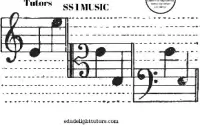Understanding Farm Animal Anatomy: Nervous and Circulatory Systems Animal Husbandry SS 1 First Term Lesson Notes – Week 7
Parts, Organs, and Functions of Farm Animals II – SS 1 First Term, Week 7:
Animal Husbandry SS 1 First Term Lesson Notes – Week 7
Subject:
Animal Husbandry
Class:
SS 1
Term:
First Term
Week:
7
Age:
14 – 16 years
Topic:
Parts, Organs, and Functions of Farm Animals II
Sub-Topic:
- Nervous System
- Circulatory System
Duration:
40 minutes
Behavioral Objectives:
By the end of the lesson, students should be able to:
- Identify the main parts and organs of the nervous and circulatory systems in farm animals.
- Explain the functions of the nervous and circulatory systems.
- Describe how these systems contribute to the overall health and functionality of farm animals.
Keywords:
- Nervous system
- Circulatory system
- Blood
- Stimulus
- Homeostasis
Set Induction:
The teacher initiates a discussion about how animals respond to their environment and the importance of their body systems in those responses.
Entry Behavior:
Students have previously learned about the digestive and respiratory systems in farm animals.
Learning Resources and Materials:
- Diagrams of the nervous and circulatory systems
- Videos illustrating how these systems function
- Models of animal organs
Building Background/Connection to Prior Knowledge:
This lesson builds on the previous knowledge of farm animal anatomy by introducing the nervous and circulatory systems, which play vital roles in maintaining health and responding to environmental changes.
Embedded Core Skills:
- Critical thinking
- Research skills
- Collaboration
- Communication
Learning Materials:
- Notebooks
- Textbooks
- Whiteboard and markers
Reference Books:
Instructional Materials:
- Anatomical charts of the nervous and circulatory systems
- Interactive models for demonstration
Content:
Parts, Organs, and Functions of Farm Animals II
1. Nervous System
The nervous system is crucial for controlling and coordinating the activities of farm animals. It includes:
- Main Parts:
- Brain
- Spinal cord
- Nerves
Functions of the Nervous System:
- Enhances stimulus response: It processes information from sensory organs and triggers reactions to environmental changes.
- Coordinates body functions: It allows communication between different parts of the body, ensuring efficient functioning.
2. Circulatory System
The circulatory system is responsible for transporting blood throughout the body. It consists of:
- Main Parts:
- Heart
- Blood vessels (arteries, veins, capillaries)
- Blood
Functions of the Circulatory System:
- Provides blood to all parts of the body: Delivers oxygen and nutrients to tissues while removing waste products.
- Maintains homeostasis: Regulates body temperature and pH levels, ensuring a stable internal environment.
15 Fill-in-the-Blank Questions (Multiple Choice):
- The ______ system controls and coordinates activities in farm animals.
a) Digestive
b) Nervous
c) Respiratory
Answer: b - Which organ is part of the nervous system?
a) Heart
b) Brain
c) Stomach
Answer: b - The ______ system is responsible for transporting blood throughout the body.
a) Nervous
b) Respiratory
c) Circulatory
Answer: c - What is the primary function of the heart?
a) To digest food
b) To pump blood
c) To absorb nutrients
Answer: b - The spinal cord is part of the ______ system.
a) Circulatory
b) Nervous
c) Digestive
Answer: b - Blood vessels include arteries, veins, and ______.
a) Nerves
b) Capillaries
c) Organs
Answer: b - The ______ system helps maintain a stable internal environment.
a) Nervous
b) Circulatory
c) Respiratory
Answer: b - Which part of the nervous system processes sensory information?
a) Heart
b) Brain
c) Lungs
Answer: b - The circulatory system delivers ______ to the body’s tissues.
a) Food
b) Oxygen
c) Water
Answer: b - The process of responding to a stimulus is primarily controlled by the ______ system.
a) Digestive
b) Nervous
c) Endocrine
Answer: b - The heart pumps ______ throughout the circulatory system.
a) Air
b) Blood
c) Nutrients
Answer: b - The ______ carries signals between the brain and the rest of the body.
a) Heart
b) Spinal cord
c) Lungs
Answer: b - The main function of blood is to ______ substances throughout the body.
a) Digest
b) Transport
c) Filter
Answer: b - Homeostasis is maintained by the interactions of the ______ and circulatory systems.
a) Respiratory
b) Nervous
c) Excretory
Answer: b - The nervous system responds to environmental changes through ______.
a) Digestion
b) Sensory input
c) Circulation
Answer: b
15 Frequently Asked Questions (FAQs) with Answers:
- What are the main parts of the nervous system in farm animals?
The main parts include the brain, spinal cord, and nerves. - How does the nervous system enhance stimulus response?
It processes sensory information and triggers appropriate reactions in the body. - What is the primary role of the circulatory system?
It transports blood, oxygen, and nutrients throughout the body. - What organs make up the circulatory system?
Key organs include the heart and blood vessels (arteries, veins, capillaries). - How does the circulatory system maintain homeostasis?
It regulates body temperature and pH levels, contributing to a stable internal environment. - What is the function of the heart?
The heart pumps blood to all parts of the body, ensuring adequate oxygen supply. - What role do blood vessels play in the circulatory system?
They transport blood between the heart and other body tissues. - Why is it important for farm animals to have a functional nervous system?
A functional nervous system allows for quick responses to environmental changes, crucial for survival. - What happens if the circulatory system fails?
If the circulatory system fails, it can lead to inadequate oxygen supply and organ failure. - How do the nervous and circulatory systems work together?
They collaborate to ensure the body responds appropriately to stimuli while maintaining essential functions.
10 Evaluation Questions:
- List the main organs of the nervous system in farm animals.
- Describe the function of the heart in the circulatory system.
- How does the nervous system enhance the animal’s ability to respond to stimuli?
- Explain the significance of blood in the circulatory system.
- Compare the roles of the nervous and circulatory systems in maintaining homeostasis.
- What are the consequences of a malfunctioning nervous system in farm animals?
- How does the circulatory system support the functioning of the nervous system?
- Discuss how environmental changes can affect the nervous system of farm animals.
- Why is understanding these systems important for animal husbandry practices?
- Explain how the nervous system can influence the behavior of farm animals.
Conclusion:
In this lesson, students learned about the parts and functions of the nervous and circulatory systems in farm animals. Understanding these systems is essential for ensuring the health and productivity of farm animals.
Related
Related posts:
- First Mid Term Test Animal Husbandry SS 1 First Term Lesson Notes
- Livestock Reproduction: Key Terms and Definitions Animal Husbandry SS 1 First Term Lesson Notes Week 10
- Understanding the Digestive, Respiratory, and Nervous Systems of Farm Animals Animal Husbandry SS 1 First Term Lesson Notes Week 9
- Nutritional Classification of Farm Animals Animal Husbandry SS 1 First Term Lesson Notes Week 2
- Meaning and Importance of Animal Husbandry | SS 1 Lesson Note Animal Husbandry SS 1 First Term Lesson Notes Week 1
Related Posts

THE RUDIMENTS OF LITERARY APPRECIATION

Classification of traditional musical instruments
Senior High School Year 3 or SSS 3 Scheme of Work
About The Author
Edu Delight Tutors
Am a dedicated educator with a passion for learning and a keen interest in technology. I believe that technology can revolutionize education and am committed to creating an online hub of knowledge, inspiration, and growth for both educators and students. Welcome to Edu Delight Tutors, where learning knows no boundaries.